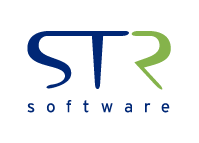As you move to R12, you may be wondering what will happen to your Oracle Reports. Here are five commonly asked questions and their answers on the topic of migrating from Oracle Reports to BI Publisher in R12.
Is BI Publisher included with Oracle EBS R12?
Yes, BI Publisher is installed with R12 with a “limited use license” which allows you to report on data that exists in Oracle’s seeded tables. Reporting on custom tables is prohibited with this license so you should address any licensing questions with your Oracle Sales Representative.
What will happen to my existing Oracle Reports?
In R12, you can continue to use your existing Oracle reports as the concurrent manager will still run reports. However if you would like to transition to BI Publisher, you can change the report output to XML by editing the Concurrent Program definition and changing the output type to ‘XML’. BI Publisher can then use the data to format the report.
But aren’t Oracle Reports going away?
It’s true that Oracle reports are not being actively developed for R12, but they still exist within the application. Oracle continues to support the majority of existing reports and the report developer through the latest version of Oracle. Moving forward however, new reports or modified reports are being pushed over to BI Publisher data template format.
How are BI Publisher generated reports different from standard Oracle reports?
Standard Oracle Reports are the result of queries and data combined with layouts – the formatting is inseparable from the report generation which is why you may have multiple copies of similar but slightly different reports on your system. However, BI Publisher separates the layout from the data model which allows a variety of layouts to be applied to a single data model making BI Publisher faster and more flexible than standard reporting.
Is it true that BI Publisher in R12 allows me to deliver reports from Oracle EBS?
BI Publisher offers some limited capabilities, but it comes at a cost:
- Implementation Duration – An unnecessary bottleneck can occur in accessing IT resources when considering the amount of programming, configuration, and testing required
- Troubleshooting Speed – Even after implementation, significant IT resources are required to maintain and troubleshoot day-to-day issues and delivery failures
- Functionality – Native delivery’s limited controls lack the ability to conduct basic actions like, confirm the status of a delivery, quickly re-send failed documents, and add multiple attachments to a report
With a prepackaged solution like AventX Oracle Connector, technical teams can set and forget the application, empowering users to service their own day-to-day delivery challenges. In addition, a packaged solution allows IT to avoid complex development, keeping resources focused on other projects and further limiting customizations to your EBS environment. Users have greater flexibility over how and what they send, and receive the confirmation they need to be confident their documents were delivered successfully to the right recipients.
While BI Publisher may be a step in the right direction for Oracle, be sure to investigate your organization’s delivery needs and do not assume they can be met natively in R12. View this Quick Reference Guide to understand the pros and cons of native delivery options from EBS R12.
![]()
This article is part of BI Publisher University: a free collection of BIP resources.


![Rollup of Product Updates [Spring 2024; v24.1]](https://www.strsoftware.com/wp-content/uploads/2023/02/Feature_Image_ProductUpdate_Wave-510x382.png)

